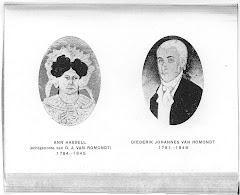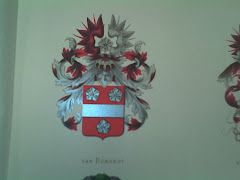
Source: http://www.stmartin-sxm.com/tintamarre/
Article by Andrew Mac Donald
An 80 acre island that once had it's own king, navy, and airline. True!
"Situated to the East of the Orleans quarter of St.Martin, at a distance of approximately three quarters of a league, it could be about two and a half leagues around: there is still woodland on this island and the land is very clean to take the air and also for cotton plants. The coastline of this island is the most abundant in fish in the surrounding area, and you can also find there many masonry stones and stones out of which limestone [lime?] can be made." Letter of October, 1764: Current state of the islands of Saint Martin and Saint Barthelemy signed by Auguste Descoudrelles Governor of French St Martin from 1763 to 1785.
Ile Tintamarre, often known locally as "Flat Island", seemingly has had three periods of at least transitory activity. The first was in the 18th century when, after the French had retrieved it from the English, who had held it for some 40 years, it. had approximately 150 inhabitants. Then, like so much of the land on both the Dutch and French sides, it came into the possession of the van Romondt family. The final phase came in the middle of the Twentieth century, when Tintamarre heralded the development of air transportation in this area, which we take for granted today.
After the French took possession from the English, a dispute arose over the island's sovereignty. The island was owned by a succession of persons from St.Christopher (St.Kitts). They resisted French efforts to take possession of the island. Their ownership was never in doubt, but their allegiance was not to the French King or the governments that followed. It must be remembered that St.Martin was regularly changing hands at this time; the end of the eighteenth century leading up to the Napoleonic wars.
Then it passed to the van Romondt family. The first to come to St.Martin was Diederik Johannes van Romondt (1781-1849) who arrived from Holland in 1801. He served as governor of Sint Maarten from 1820 to 1840. From that time for more than a century the van Romondts were the undisputed leaders and social arbiters. The last member having the van Romondt name was Diederik Christian (1871-1948) who died at the age of 76 at Mary's Fancy, his estate in Dutch Cul de Sac.
"Because of a dispute over property taxes (Gebruiksbelasting) in 1902 Diederik Christian moved to the Isle of Tintamarre, which he also owned. (There is reason to believe that Tintamarre is a Dutch island as it was not included in the original partition treaty of the main island of St. Martin 23 March, 1648)" [Johnson]. Thus began most memorable period of Diederik Christian's life, and one of the most extraordinary chapters in the history of the island.
There, in Kruythoffs phrase, "he reigned unmolested in almost regal independence." In fact, a French journalist wrote in Journal de Paris, August 23rd, 1913 under the headlines of "Le Roi de Tintainarre" (The King of Tintamarre), so glowingly that "he received many letters from Paris, Italy, and Germany, and some from heiresses who solicited a lifelong partnership with Mr. van Romondt to become 'queen' of a romance as well as Tintamarre."
Tor the people working for him (most of them from Anguilla) he founded a shop on the island, and in 1913 he imported 30,000 Dutch cents, which were circulated among them as a currency of his own. Dutch cents were seldom used as a means of payment in the Windward islands; Mr. van Romondt attributed an exchange rate of value of half a penny to each cent. Those who left could exchange their saved cents for current coins on Sint Maarten." [Hartog]
He raised 60 to 70 head of cattle and about 540 sheep, grew fine sea island cotton, and made cheese and butter which were renowned throughout the West Indies. Then in 1931 he sold the island to Louis Constant Fleming, a merchant and mayor of Marigot, and the following year returned to
Mary's Fancy.
There are many rumours about U boat activity around Tintamarre during World War 11. It's a possibility submariners may have enjoyed "R&R" on the is land while their boats were refuelled. French St.Martin was like other French islands in the area, under the control of the Vichy French. The shallow waters around Tintamarre may have allowed the subs to sit on the bottom and "snorkel" while their diesel engines recharged their batteries. However as the war progressed attacking the more strategic Allied trade with the refineries on Curacao and Aruba, the invention of sonar and over-stretched Nazi logistics would have limited operations in this area.
The last flurry of activity on Tintamarre was described by Georges Bourdin, a French journalist, who devoted 30 years to writing a history of St.Barth. He wrote that Remy de Haenen, who brought the age of aviation to St.Barth in 1945, a few years earlier "had decided to establish his base on Tintamarre, and other planes followed. In 1946 he founded the "Compagnie Aerienne Antillaise" or CAA. An agreement was reached to rent the island from L.C. Fleming, there being no airports on French St Martin, St Barths or Guadaloupe at that time. Tintamarre offered space for a 500 meter dirt runway, alongside a protected lagoon suitable for flying boats.
Soon Tintamarre became the operational and maintenance base of a regional airline. CAA Stinson Trimotors would fly the longer stretches to Puerto Rico and Guadaloupe, mostly from Juliana. The Sikosky S-41 flying boat, built for PAN AM anno 1930, would connect to the islands without airports, Dominica, Martinique and even as far St Lucia. From Juliana or Flat Island the small Stinson Detroiter would shuttle passengers to St Barths or Anguilla.
This was a brief golden age for this tiny island off St.Martin, with it's 20 inhabitants. On 22 March 1947 a disastrous night take-off from the unlit airstrip, killed a pilot. Shortly thereafter, on 22 May 1947, the Stinson Detroiter crashed into the sea between Flat Island and St Barths, killing two. The final blow was another fatal night take-off that killed three on 9 June 1947. Tintamarre with its 50 acres, had never known such activity, the hurricane of 1 September 1950 finally put an end to the old CAA airplanes still on the island and it reverted to its scrub growth and goats. The last traces of the airstrip were erased by the 1956 and 1960 hurricanes.
When you visit Tintamarre on the Nude Cruise, the island is yours to explore. You will find traces of it's history. Imagine the Allets and the Paynes, the pioneering families who produced lime and farmed and peacefully resisted the reasonable efforts of the French to establish their sovereignty. The ruins of buildings and stone walls define the idyllic age of agriculture, when "Mr. D.C." van Romondt was romanticised by journalists. Finally, you will find what is left of the aircraft as you're standing on what was once an active airstrip. Now it reverts to almost its natural state.
The author wishes to acknowledge the assistance of George Utter, Francois van der Hoeven (Stinapa), Lee Gustafson (Sint Maarten Museum) and Capt. John Smith (S.V. Mermaid of Carriacou). Written sources include "Flat Island, Tintamarre, Tital island?.." by Alex Richards and "Flat Island Aviators" by Jerry Casius. Both these articles appear in the current DISCOVER Saint Martin/Sint Maarten magazine (No.8). Extensively quoted is "The making of an island Sint Maarten Saint Martin" by Jean Glasscock. Also "The Love of St.Maarten" by Will Johnson was the source of van Romondt family history. Another source is "History of Sint Maarten and Saint Martin" by Dr. J. Hartog.Thank you to the helpful staff at the Philipsburg Jubilee Library.



No comments:
Post a Comment